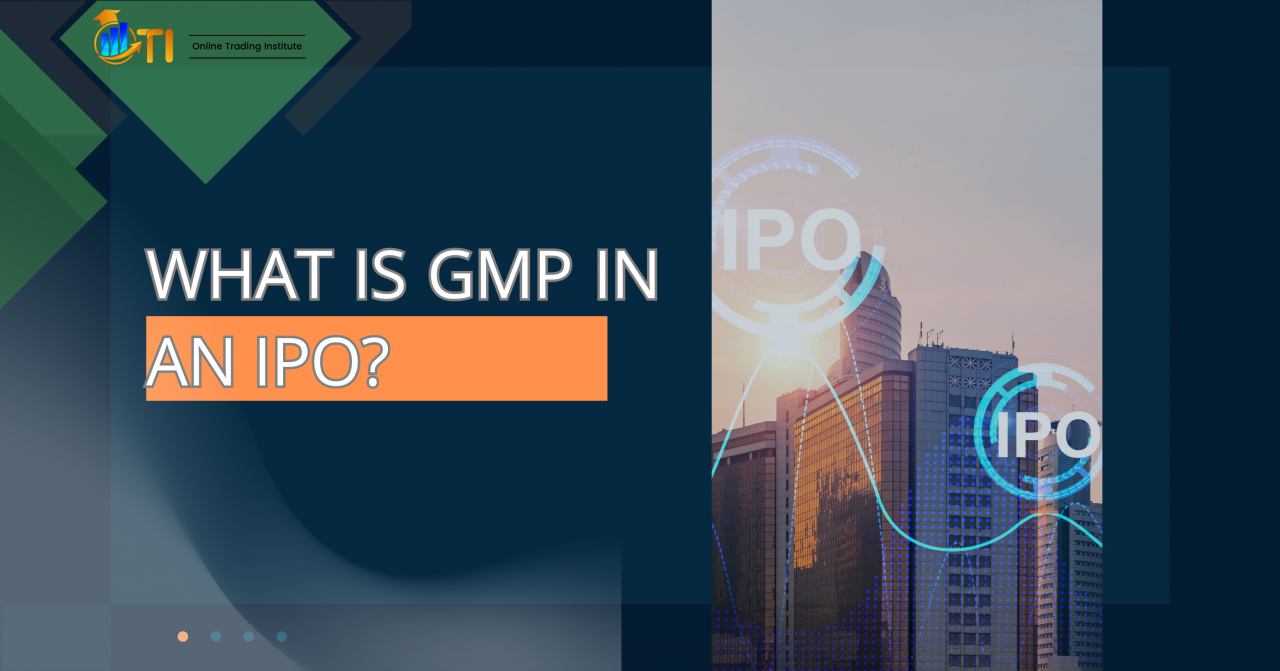What is GMP in an IPO?
The IPO process is a key turning point for firms looking to go public and raise funds from the market. GMP, which stands for Grey Market Premium, is a word that commonly catches the attention of investors and market enthusiasts during the pre-IPO phase.
In this blog, we will go deeper into the subject of GMP in an IPO, studying its definition, the concept of the Grey market, the different types of trading in the Grey market, the IPO grey market’s operating process, how to calculate GMP, and its potential impact on the IPO listing.

What is the Grey Market?
The grey market is an unauthorised market in which securities are bought and sold prior to their formal listing on a stock exchange. It operates outside of established exchanges and is not subject to the regulatory monitoring that is typical of official markets.
Participants in the Grey market trade with the expectation of profiting from the future listing price of assets.
Unlike the primary and secondary markets, this market is not controlled by SEBI. It is based on trust and relationships rather than rules and laws. The IPO GMP is mostly influenced by market factors, which reflect the demand and supply dynamics of the IPO shares on the grey market.
What is Grey Market Stock?
Stocks that are not yet registered on an official exchange but are regularly traded on the Grey market are known as grey market stocks.
These securities include shares of companies that have recently completed their Initial Public Offering (IPO) but have not yet begun trading on the stock exchange.
Types of Trading in Grey Market
Grey market trading can be divided into two types:
- Purchasing or selling IPO shares before they are listed on stock markets.
- Trading IPO applications at fixed rates or premiums.
Furthermore, because these funds are handled passively, you won’t have to worry about a fund manager making a bad decision.
How does the IPO Grey Market Work?
The IPO Grey market exists between the end of an IPO subscription period and the listing of the shares on the official stock exchange.
During this transitory time, investors in the grey market can purchase and sell shares based on their predictions of the stock’s performance until it is formally listed on the exchange.
High-net-worth people, big investors, and even ordinary investors seeking to profit from short-term price swings are among those who participate in the grey market. Market behaviour, company fundamentals, and overall economic conditions all influence demand and supply trends in the Grey market.
How to Calculate GMP in an IPO?
The Grey Market Premium (GMP) is a key metric in the IPO Grey market, signifying the difference between the predicted market price of the IPO shares and the company’s issue price. GMP is calculated by analysing the demand and supply in the Grey market for a specific IPO.
GMP is obtained by = Grey Market Price – Issue Price.
In this case, the Grey Market Price is the price at which the IPO shares are sold in the Grey market, and the Issue Price is the price at which the company is selling its shares during the IPO.
For example: If the issue price is ₹30, and the grey market price is ₹20, the GMP would be ₹10. This shows that the IPO shares in the grey market are available for the price of ₹10.
Does GMP affect the IPO Listing?
The Grey Market Price may have an impact on the IPO’s final listing on an official stock exchange. A favourable GMP indicates high demand for the IPO shares, but it does not ensure an equivalent price when the shares are formally listed. Several things can have an impact on the performance of the IPO on the day it is listed.
Market Conditions
Changes in overall market conditions can have an impact on the performance of an IPO. If market sentiment is negative on the day of listing, a positive GMP might not turn into an enormous listing gain.
Company Fundamentals
The performance of the IPO is ultimately connected to the fundamentals of the issuing company. If investors believe in the company’s growth possibilities, it is more likely to be listed favourably.
Overvaluation Concerns
High GMP could cause concerns about the IPO being overpriced. If the market believes that the Grey market premium isn’t justified by the company’s fundamentals, the listing gain could get lower.
Conclusions
GMP in an IPO is a crucial indicator caused by the Grey market that provides insight into the expected demand and pricing of IPO shares prior to their official listing.
Investors interested in IPOs frequently watch GMP in order to make informed judgments on subscription and potential listing gains. However, it is important to recognize that GMP is only one of many factors that determine an IPO’s performance.
Thorough research and evaluation of several factors, as with any investment, are required for making informed investment choices in the volatile world of IPOs and the Grey market.
Get access to market news, updates and trends; follow our telegram channel @onlinetradinginstitute
| Disclaimer: The sole purpose of our financial articles is to provide you with educational and informative content. The content in these articles does not intend any investment, financial, legal, tax, or any other advice. It should not be used as a substitute for professional advice or assistance. |



